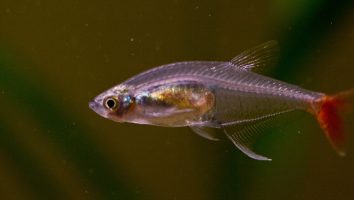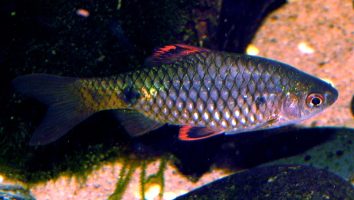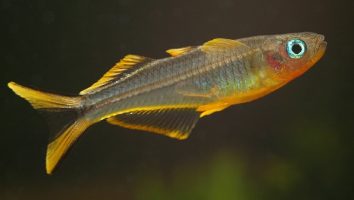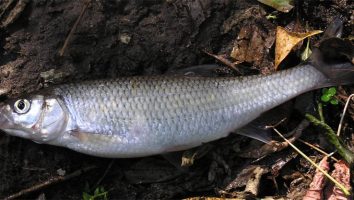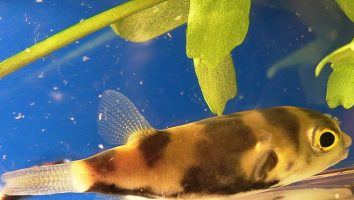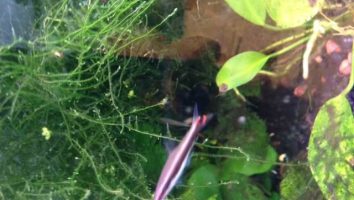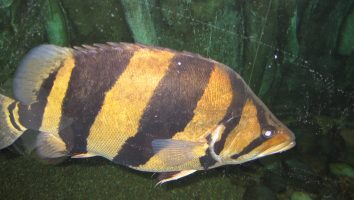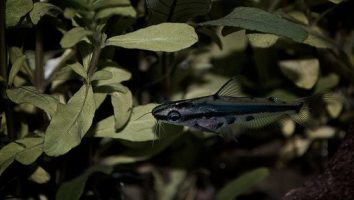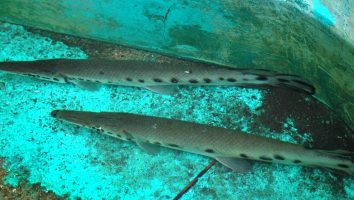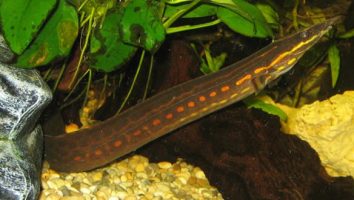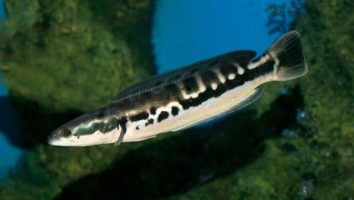The Cobalt blue cichlid is a beautiful and popular freshwater fish that is known for its vibrant coloration.
This species is also known to be rather aggressive, so it is important to do your research before adding one to your tank.
This guide will teach you everything you need to know about Cobalt blue cichlid care. You’ll learn about their diet, size, lifespan, and more!
Table of contents
Species overview
Cobalt blue cichlids (scientific name: Aulonocara stuartgranti) are a type of freshwater fish that’s native to Lake Malawi in Africa.
They are found in the rocky areas of the lake where there is a lot of vegetation. Cobalt blue cichlids prefer to eat small invertebrates, but they will also consume algae.
These fish are very popular in the aquarium trade due to their stunning blue coloration. They are also relatively easy to care for, which makes them a good choice for beginner aquarists.
Cobalt blue cichlids are peaceful fish, but they can be territorial toward other cichlids. It’s best to keep them with other peaceful fish that are similar in size.
Appearance
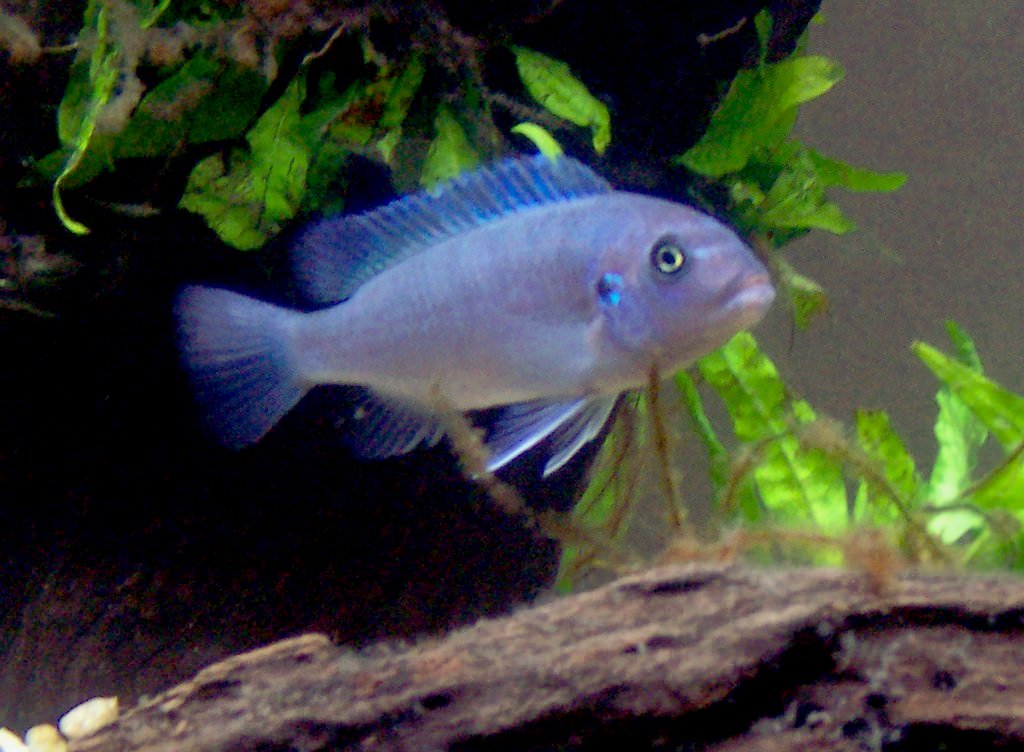
As the name suggests, these fish are a deep blue color. The blue is so dark that it’s almost black in some lighting. They have a few electric blue stripes that run horizontally across their body.
These stripes are most prominent on the juveniles and tend to fade as the fish gets older. The electric blue coloration is also more intense on the males than the females.
Cobalt blue cichlids have an elongated body that’s relatively slender. They have a small head with a protruding lower jaw.
The fins on this species are fairly standard for a cichlid. The dorsal fin is tall and starts about two-thirds of the way back on their body. The anal fin is shorter but extends back almost to the same point as the dorsal fin.
Both of these fins have a filament at the end. The caudal fin is forked and relatively tall.
Cobalt blue cichlids also have a set of adipose fins that are located just behind the dorsal fin. These fins are small and thin.
Lifespan
Cobalt blue cichlids have a lifespan of around 10 years. However, there are many factors that can impact their lifespan, such as water quality, diet, and stress levels.
If you provide them with good care, they can live up to their full potential and reach the higher end of their lifespan.
Size
Cobalt blue cichlids can grow to be about 6 inches long. Males are typically larger than females and can reach up to 8 inches in length.
Tank
Tank Size
The recommended minimum tank size for one Cobalt blue cichlid is 30 gallons.
If you want to keep more than one Cobalt blue cichlid, you need to add an additional 20 gallons of water for each fish.
Cobalt blue cichlids are not the most peaceful fish and can become aggressive as they mature. If you want to keep them with other fish, you need to make sure the other fish are of a similar size and that there are enough hiding spots for everyone.
Water Parameters
The Cobalt blue cichlid is a freshwater fish that is native to Lake Malawi in Africa. In the wild, they prefer habitats with a sandy bottom and plenty of rocks to hide in.
They’re also known as the Malawi blue cichlid or electric blue cichlid.
Cobalt blue cichlids are a popular choice for many freshwater aquariums. They’re known for their vibrant blue coloration and their peaceful nature.
While they can be kept in a community tank, it’s best to keep them with other cichlids from Lake Malawi.
Here are a few water parameters to keep in mind when setting up a tank for Cobalt blue cichlids.
- Water temperature: 78 to 82 degrees Fahrenheit
- pH levels: 7.5 to 9.0
- Water hardness: 8 to 30 dGH
- Alkalinity levels: 10 to 30 dKH
What To Put In Their Tank
A Cobalt blue cichlid tank should have a dark substrate. This will help to bring out their vibrant colors. The substrate can be sand, gravel, or even a dark-colored clay.
Cobalt blue cichlids also prefer a dimly lit tank. You can achieve this by using a dark-colored gravel or sand substrate and by using plants that don’t require a lot of light.
Some good plants for a Cobalt blue cichlid tank include Java moss, Anubias, and Cryptocoryne.
You should also include some hiding places in the tank for your Cobalt blue cichlids. Rocks, driftwood, and caves all make good hiding places.
Cobalt blue cichlids are also known to dig in the substrate, so you may want to consider a sand substrate to prevent them from digging up your plants.
Common Diseases
There are a few diseases that you should look out for if you’re keeping cobalt blue cichlids. These fish are rather hardy, but poor water quality and other aquarium problems can still lead to illness.
The most common disease that affects these fish is ich. This is a parasites that can cause white spots to form on the body, fins, and gills of your fish.
If left untreated, ich can be deadly. However, it’s relatively easy to treat if you catch it early.
The other disease you need to be aware of is Hole in the Head disease. This is caused by poor water quality and the presence of activated carbon in your tank.
It will present itself as one or two pits/holes in the skin of your cobalt blue’s head. While it’s almost always curable, it will usually leave some scarring on your poor fish!
To avoid these diseases, it’s important to maintain the water quality in your tank. Regular water changes and vacuuming the gravel will go a long way towards keeping your fish healthy and disease-free.
Behavior & Temperament
The cobalt blue cichlid is a beautiful fish that is known for its peaceful temperament. This fish is perfect for beginner aquarists because it’s easy to care for and doesn’t require a lot of attention.
Although the cobalt blue cichlid is peaceful, it is also very active. This fish loves to swim and explore its surroundings. You’ll often see it cruising around the tank, checking out every nook and cranny.
One thing to keep in mind is that the cobalt blue cichlid is a bit of a loner. It’s not a social fish and doesn’t like to interact with others. In fact, it can be quite territorial. If you put more than one cobalt blue cichlid in a tank, be prepared for them to fight.
Tank Mates
Cobalt blue cichlids are relatively peaceful fish. They’re not known to be overly aggressive, and they generally get along with other fish.
That said, they are cichlids. And cichlids, in general, have a reputation for being aggressive.
The good news is that cobalt blue cichlids are on the smaller side. They only get to be about four inches long, which is much smaller than most other cichlid species.
This size difference is important because it means that they’re less likely to bully other fish. They’re also less likely to be bullied themselves.
Cobalt blue cichlids are also peaceful fish within their own species. They can be kept in pairs or groups without any problems.
When choosing tank mates for cobalt blue cichlids, it’s important to pick fish that can hold their own. These cichlids are not known to be overly aggressive, but they can be nippy.
Some good tank mates for cobalt blue cichlids include:
- Tetras
- Guppies
- Danios
- Mollies
- Platies
- Swordtails
- Rainbows
Breeding
Cobalt blue cichlids reach maturity at around six months of age. At that point, you can start to look for signs that they’re ready to breed.
Males will start to develop longer fins and brighter colors. The blue hue will be more intense. Females will also get brighter, but their colors won’t be as vivid.
When ready, the fish will start to build nests out of rocks, plants, and other materials. The male will do the majority of the work, but the female will help out.
Once the nest is complete, the female will lay her eggs inside. The male will then fertilize them. After that, he’ll defend the nest and care for the eggs.
Once the eggs have hatched, the fry will be free-swimming. At that point, you can start to feed them baby brine shrimp or other small foods.
Conclusion
Overall, the Cobalt Blue Cichlid is a great fish for intermediate aquarists. They’re not the easiest fish to care for but they’re also not the hardest.
With that being said, we do not recommend them for beginners. If you’re new to the hobby, we recommend sticking to fish that are a little bit easier to care for.
But if you’re looking for a fish that is moderately easy to care for and is absolutely gorgeous, the Cobalt Blue Cichlid is a great option!

